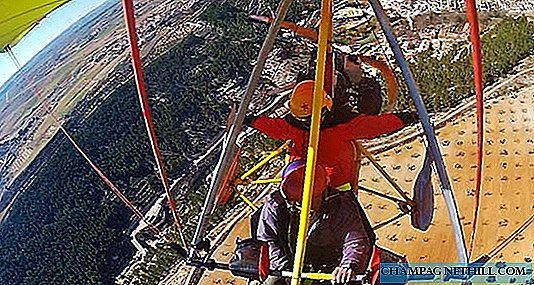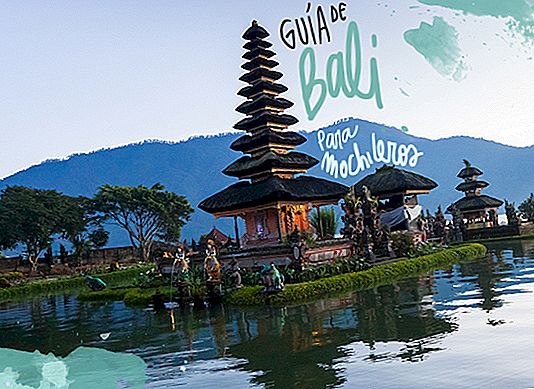
Varanasi It was the icing on the cake of our first trip through India and also the one we made later with Lety's parents. Sacred city, chaotic, religious, backpacking, fun, different ... We have enjoyed Varanasi every moment, as we have done with the rest of India. If you want to know what to see and do in Varanasi keep reading…
Tip: nothing better to get to know Varanasi than to take a local hand tour 🙂 This is free (although it is always good to leave a tip).
The name "Varanasi" originates in its location, between the Varuna and Assi rivers. Although the real protagonist here is the Ganges River, the sacred river in whose waters each Hindu aspires to be scattered in the form of ashes at the end of his earthly life, and thus end the cycle of reincarnations and reach Nirvana. Varanasi is the most sacred city in all of India, and many people, and their families of course, travel thousands of kilometers to get here in their last stage in this life. It is not uncommon to see old people sitting in the streets, waiting for their time to come ...
The Ganges does not cross Varanasi, but leaves it on one of its margins, where some stands have been built, or ghats, which are the biggest attraction of this place. By these the Hindus access the sacred waters (and very polluted) to perform their bids and ablutions, and thus purify the body and soul.
In total there are 87 ghats distributed along the bank of the Ganges, although the ones that attract the most attention are the two crematorium ghats. TheHarishchandra Ghat it is smaller and there is less activity, while the Manikarnika Ghat It is the most important and where there will be cremation ceremonies continuously.
Until these ghats the deceased are wrapped in sheets and transported on altars by their relatives. The wood pile is already being prepared, previously the type and kilos of wood that will be necessary for complete cremation have been negotiated, adjusting it to the maximum and trying to include some sandalwood (more expensive) to soften the aroma. When the body of the loved one begins to burn, the relatives contemplate him sitting on the steps of the ghat, sad for the loss of an important person, but happy because they know that burning in this place is the deceased's last wish, which will happen to eternal life as soon as the ceremony ends and its ashes are thrown into the Ganges.
These ceremonies are private and please, yes, you are curious to see them, always be respectful, stay a certain distance and do not take photos. We warn you that it is a very strong moment and sometimes it is better to continue the walk through the other ghats.
The main and most ambitious ghat of all is theDashashwamedh Ghat, this is where the celebration of the aarti at dusk and where there is more movement of people during the day. However we prefer the Assi Ghat, to the south and much quieter. There you can also attend these important fire ceremonies in Varanasi. You can participate in them and end up throwing flower petals or other offerings into the waters of the Ganges.
Although the ideal is walk along the ghats. You can see the great palaces on the banks of the Ganges, built by important princes and come at least by the passage of time (some of them are being rehabilitated as tourist accommodation). Or graffiti on its walls, we love street art! On the walk you will meet a few Sadhus who will ask you for a tip for a photo, and others who pay no attention to the tourists sitting sharing their cigars. And small stands where the mythical Indian chai is prepared.
At certain times the buffalo herds go down to take a good dip, and they are not the only ones, as the Ganges are shared by both animals and people! The truth is that it is very difficult to get bored here, so it is best to take a shawl, sit on a step and enjoy Indian life. Although if we have enjoyed something getting into the body is the Apple pie from Vaatika Café in the Assi Ghat, my mother that rich!
However, there is something we can never forget: the boat ride on the Ganges at dawn. Contemplate how local life begins, women washing clothes, men doing their ablutions, cremation ghats with their eternal smoke ... and an image that will be stuck in our retinas ... If you're not early, we recommend doing it at sunset, and Finish arriving just before the aarti. In the useful info part at the end of the article we tell you how to hire these boats.
Keep in mind that the Ganges is a living river. Like everyone, it will have its times of flood, which are usually in summer. The first time we were in March and the level was normalized, however the second, in October, it had only been 10 days since the Ganges reached its third highest level in history. If you look at the walls, there is a point where the marks where the water came in the past years are pointed.
One day we visited the strong on the other side of the river, crossing a somewhat rustic bridge that endured everything that will be thrown out. The truth is that it was a crap, they asked for a lot of money for the entrance and we turned around to see that it was impossible to negotiate with the police.
But no, in Varanasi there is not only life on the banks of the Ganges, inside a tangle of alleys Where to get lost is a matter of seconds! And what's wrong with getting lost? If in the end you know that you are going to find some known place to return home, and everything you see during this time are sometimes somewhat surreal wonders.


We complete our stay in Varanasi with the visit to the friends of “Seed for Change“, You can read the article here. We spent the last hours to buy the postcards for those who helped us in the project and to say goodbye to all the beautiful things that India has given us.
We also say goodbye to each other, because now Lety takes a train to Calcutta and Rober another to Delhi ... our roads separate for a few weeks, but we will meet again ... And if we will miss something will be our dear Gulab Jamuns!

USEFUL INFO
How to get:We did it on a night train from Kahurajo station, 8 km from the town. We paid 70 INR for tuctuc and train were INR 235 per person in sleeper that lasted about 8 hours.
From Varanasi station to Assi ghat the tuctuc is paid at 50 INR. There is enough traffic and it takes time to arrive.
Where to sleep:We spend the night in two different places: one more flirtatious and one more backpacking. If you are looking for cheap accommodation in Assi ghat there are quite a few, and if you take a walk around the ghats you can find something. There is a lot of offer
Boat trip on the Gangess: To hire it is very simple, approach one of the important ghats (we believe it is best to take it in Assi Ghat) and wait for a boatman to approach you proposing your price. There are two types of boat, the paddle and the motorboat, on our first trip we take the paddle and, although it is much quieter, the round ends with a heavy tide, especially going against the current. For the sunrise, with paddles we paid 300R for two, the entire boat with engine for 4 at sunset on the next trip was 800R. In both cases we went from the Assi Ghat to the Panchganga Ghat and back.
Take a walking tour in Spanish! We met Cristina at the NGO Semilla for change, she is a wonderful person! Now he has created his own association to help the most needy people in his city: Varanasi. In addition, together with Ravi, they have set up a small travel agency, they tour Varanasi and also in northern India. Check out their websites:
- NGO Swawalambi
- Sangha Services
Do you know more stuff what to see and do in Varanasi?











